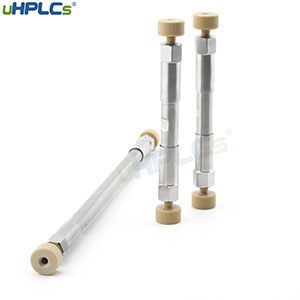It would be more appropriate to fix C18 as one of the most used chemicals. In the column suppliers, this stage of the growing variety is certainly not small. However, before we delve into the topic at hand, here is a brief review of how the C18 stationary phase was created.
Reverse phase chromatography
As more scientists became involved in the field of reversed-phase chromatography, additional separation modes were introduced to separate and purify multiple compounds from many different matrices. In chromatography, ionic and strongly polar analytes are eluted from the column first, followed by more hydrophobic analytes. In contrast to Tsvet, these compounds were eluted in reverse order. For this reason, the system is called “reversed-phase” chromatography.The ultimate goal of RP technique is to separate analytes with different hydrophobicity. In short, this task is accomplished by:
1. Retention of analyte by hydrophobic stationary phase.
Modify and optimize multi-component solvent systems with different capabilities as good solvents for target analytes. This includes organic solvents and buffer solutions if applicable. Not all compounds are strongly acidic or alkaline, but may have polar groups that require a narrow pH range to control their behavior. The column has a wide PH range and is very durable in extreme PH conditions. For low PH applications, the liquid chromatographic column showed good stability and reproducibility with 1500 consecutive samples injected at PH 1.8.Hydrocarbons, perfect examples of hydrophobicity, are actually oily substances. More specifically, straight-chain alkanes are well suited as good stationary phases. We should note that the physical properties of hydrocarbons change as more carbon atoms are added to the chain — C1 through C4 are gaseous; C5-c17 is a liquid; C18 and bigger are solids. In addition to alkanes, there are other candidates, such as aromatics and cyclic alkanes, which can also be used as stationary phases here. The popularity of C18 may be due to the early availability of starting materials for the bonding process. This lucky coincidence led to the further discovery that C18 was well suited to the chromatographic process, either way. The c18 column is widely used for the analysis of various compounds and is one of the most widely used products by customers.
2. Attach alkane groups, especially C18 or octadecyl groups, to suitable surfaces. Silica performs better than all other media considered, with silica particles coming in A variety of shapes (regularly spherical or irregular), sizes (0.9O 10 µm or more), porosity (up to 1000 A), and being fully porous or having A solid core in design.
3. After the bonding process is complete, the C18 ligand is attached to silica at the molecular level and is physically placed within the silica particle pore for a more general purpose.
4. The advantage and simplicity of the C18 stationary phase is that it provides very simple hydrophobic interactions. Solutes in the mobile phase can be attracted to and retained by hydrocarbons through fairly weak hydrophobic interactions as they pass through silica pores.
5. In general practice, the spectrographer recommends setting the flow pH at 2 units above or below pK B or pK A to ensure that the compound is present in a form that is most likely to remain on the column. Of course, there are exceptions to almost everything and every rule.
So far, we have introduced only one component of the mobile phase, especially the aqueous part. This led us to use a variety of chemical properties to help improve the retention of the analyte on the C18 stationary phase.
In summary, C18 is one of the simplest and most convenient stationary phases available for reversed-phase chromatography.
Post time: Jul-14-2022








